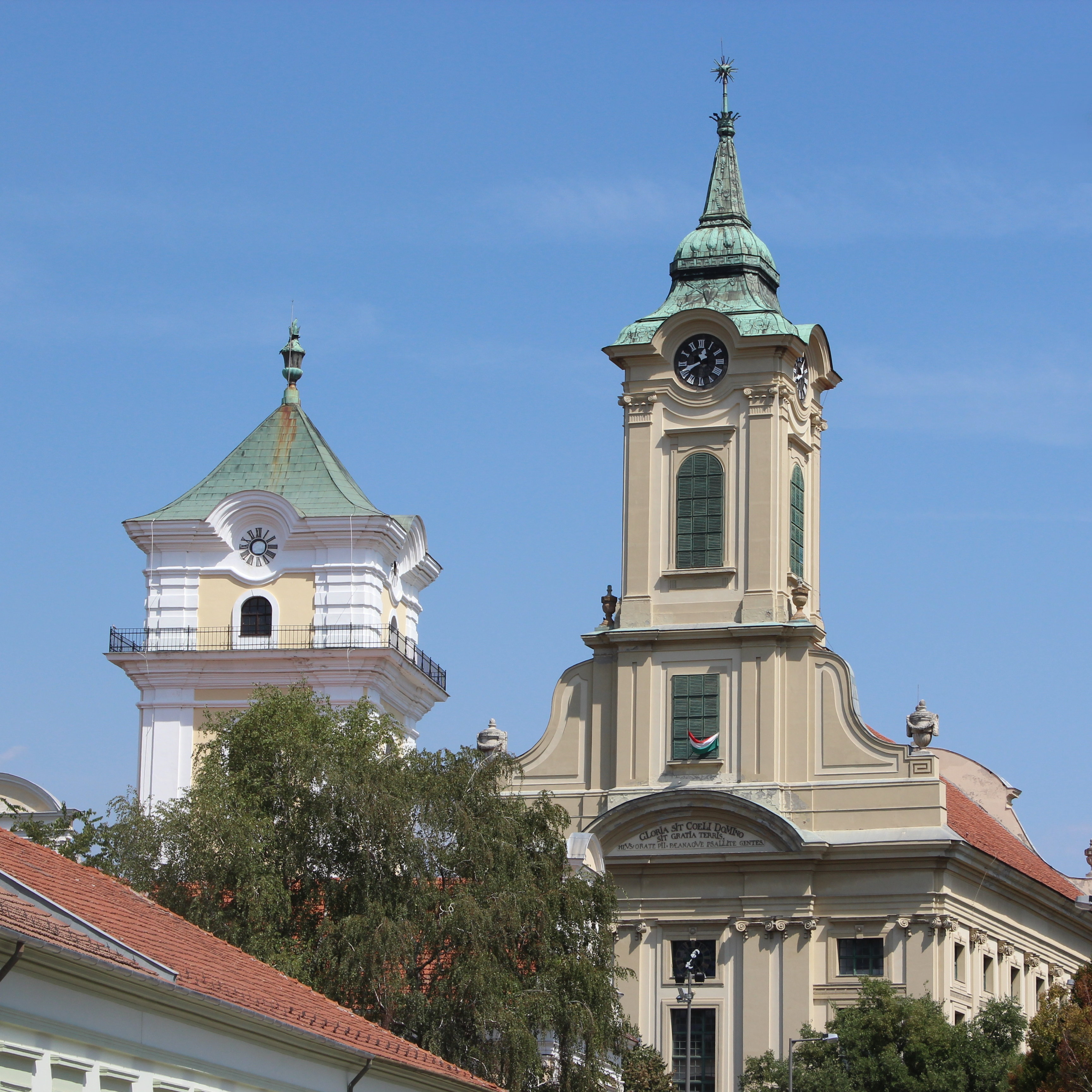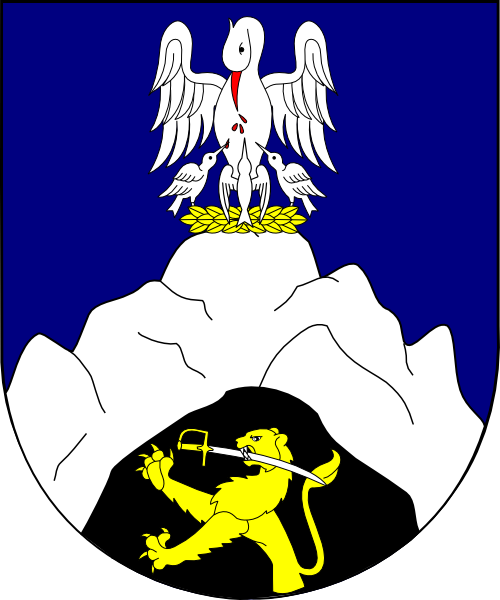|
2011–12 Nemzeti Bajnokság II
Eastern group Teams Szolnoki MÁV FC and MTK Budapest FC finished the 2010–11 season in the bottom two places of the table and thus were relegated to their respective NB II divisions. MTK ended a 16-year stay in the top league, while Szolnok were relegated after just one year in the league. The two relegated teams were replaced with the champions of the two 2010–11 NB II groups, Diósgyőri VTK of the East Group and Pécsi MFC Pécsi Mecsek Football Club, commonly referred to as Pécsi MFC or simply PMFC, is a professional Hungarian football club based in Pécs, Baranya, that currently competes in the Hungarian second division. The club was established on 16 Februar ... of the West Group. Diósgyőr made their immediate comeback to the league, while Pécs returned to the competition after an absence of four seasons. Stadium and locations League table Western group References {{DEFAULTSORT:2011-12 Nemzeti Bajnokság II Nemzeti Bajnokság II seasons 201 ... [...More Info...] [...Related Items...] OR: [Wikipedia] [Google] [Baidu] |
Nemzeti Bajnokság II
NB II, currently known as the Merkantil Bank Liga for sponsorship reasons, is the second tier of Hungarian football. At the end of the 2004–05 season, the tournament format was changed from one division of 14 teams to two divisions: ''Keleti'' (Eastern) and ''Nyugati'' (Western), each with 16 teams. In 2013 the format was changed and there is one division again with 16 teams, and then 20 teams from 2015. The champion and the runner-up will ascend to the first division while the two lowest teams in NB II are relegated to NB III. Format On 2 March 2017, the Hungarian Football Federation announced that the number of the teams in the Nemzeti Bajnokság II will not be reduced to 12. History The second league was founded in 1901, having 8 teams. The first two teams would participate in a promotion playoff with the last 2 teams from the first league. Even though the 4 rural districts were founded on paper in 1904, they only began to compete officially in the season 1907-1908. Thus ... [...More Info...] [...Related Items...] OR: [Wikipedia] [Google] [Baidu] |
Ceglédi VSE
Ceglédi Vasutas Sportegyesület, commonly referred to as Ceglédi VSE is a Hungarian sports club based in Cegléd, Pest County. It consists of multiple departments, namely football, athletics and wrestling. The team's colours are yellow and blue. History On 3 March 1935, Ceglédi Vasutas Sportegyesület ("Cegléd Railway Sports Association") was established on the initiative of railway station chief Dr. Gyula Stankaai, and officers Kornél Ginovszky and József Gámán. The adopted statutes set out the objectives of the new club, intended to further bring together the railway workers through sports. In the first year, 153 regular railwaymen and 98 family members became members of the club. Members of the club would excel in various sports, with club wrestler József Gál becoming the first Hungarian world champions in lightweight at the 1950 World Wrestling Championships, as well as competing in the 1952 Summer Olympics. At the 1952 Summer Olympics, club pentathlon athlete Istv ... [...More Info...] [...Related Items...] OR: [Wikipedia] [Google] [Baidu] |
Bozsik Stadion
Bozsik (, probably of Western Slavic origin, possibly from the masculine given name '' Boško'' – itself derived from the Slavic word boh/bog/ bóh for "god" – followed by the Slavic diminutive suffix '' -ik'', and thus of theophoric origin) is a Hungarian surname. It may refer to: * Gábor Bozsik (born 1981), Hungarian sprint canoer * József Bozsik (1925–1978), Hungarian footballer * Levente Bozsik (born 1980), former Hungarian footballer * Péter Bozsik Péter Bozsik (born 30 October 1961) is a football manager and son of the international player József Bozsik, who was part of the Golden Team of the 1950s and managed the Hungarian team in 1974. After an unremarkable football player career, Pé ... (born 1961), Hungarian football manager References {{surname Hungarian-language surnames Theophoric names Surnames from given names ... [...More Info...] [...Related Items...] OR: [Wikipedia] [Google] [Baidu] |
Budapest
Budapest (, ; ) is the capital and most populous city of Hungary. It is the ninth-largest city in the European Union by population within city limits and the second-largest city on the Danube river; the city has an estimated population of 1,752,286 over a land area of about . Budapest, which is both a city and county, forms the centre of the Budapest metropolitan area, which has an area of and a population of 3,303,786; it is a primate city, constituting 33% of the population of Hungary. The history of Budapest began when an early Celtic settlement transformed into the Roman town of Aquincum, the capital of Lower Pannonia. The Hungarians arrived in the territory in the late 9th century, but the area was pillaged by the Mongols in 1241–42. Re-established Buda became one of the centres of Renaissance humanist culture by the 15th century. The Battle of Mohács, in 1526, was followed by nearly 150 years of Ottoman rule. After the reconquest of Buda in 1686, the ... [...More Info...] [...Related Items...] OR: [Wikipedia] [Google] [Baidu] |
Stadion Kórház Utcai
Stadion (Greek , Latin ''stadium'', nominative plural ''stadia'' in both Greek and Latin) may refer to: People * Christoph von Stadion (1478–1543), Prince-Bishop of Augsburg * Johann Philipp Stadion, Count von Warthausen (1763–1824), Austrian statesman * Franz Stadion, Count von Warthausen (1806–1853), Austrian statesman, son of the previous * Franz Konrad von Stadion und Thannhausen (1679–1757), Prince-Bishop of Bamberg * Philipp von Stadion und Thannhausen (1799–1868), Austrian field marshal Stadiums * Stadion Lohmühle, a multi-use stadium in Lübeck, Germany * Stockholm Olympic Stadium, commonly referred to as "Stadion," a stadium in Stockholm, Sweden Train stations * Stadion metro station, a metro station in Stockholm, Sweden * Stadion (Vienna U-Bahn), a metro station in Vienna, Austria Other * ''Stadion'' (journal), a multilingual academic journal covering the history of sport * Stadion (running race), an ancient Greek running event, part of the Olympic Games an ... [...More Info...] [...Related Items...] OR: [Wikipedia] [Google] [Baidu] |
Békéscsaba
Békéscsaba (; sk, Békešská Čaba; see also #Name, other alternative names) is a City with county rights, city with county rights in southeast Hungary, the capital of Békés County. Geography Békéscsaba is located in the Great Hungarian Plain, southeast from Budapest. Highway 44, 47, Békéscsaba beltway (around the city) and Budapest-Szolnok-Békéscsaba-Lökösháza high speed () railway line also cross the city. Highway 44 is a four-lane Limited-access road, expressway between Békéscsaba and Gyula, Hungary, Gyula. According to the 2011 census, the city has a total area of . Name ''Csaba'' is a popular Hungarian given name for boys of Turkic languages, Turkic origin, while the prefix ''Békés county, Békés'' refers to the county named Békés, which means peaceful in Hungarian language, Hungarian. Other names derived from the Hungarian one include german: Tschabe, ro, Bichișciaba, and sk, Békešská Čaba. History The area has been inhabited since the a ... [...More Info...] [...Related Items...] OR: [Wikipedia] [Google] [Baidu] |
Batthyány Utcai Sportpálya
The House of Batthyány () is the name of an ancient and distinguished Hungarian Magnate family. Members of this family bear the title Count/Countess ( Graf/Gräfin) Batthyány von Német-Ujvar respectively, while the title of Prince (Fürst) von Batthyány-Strattmann is reserved only for the Head of the family. A branch of the family ( hr, Baćan) was notable in Croatia as well, producing several Bans (viceroys) of Croatia in the 16th, 17th and 18th century. History The Batthyány family can trace its roots to the founding of Hungary in 896 CE by Árpád. The family derives from a chieftain called Örs. Árpád had seven chieftains, one by the name of Örs, which later became Kővágó-Örs. In 1398 Miklós Kővágó-Örs married Katalin Battyány. King Zsigmond (Sigismund) gave Miklós the region around the town of Battyán (now called Szabadbattyán) and he took the name Batthyány (lit. "from Battyán"). The family were first mentioned in documents in 1398 and have had the ... [...More Info...] [...Related Items...] OR: [Wikipedia] [Google] [Baidu] |
Balmazújváros
Balmazújváros is a town in Hajdú-Bihar county, in the Northern Great Plain region of eastern Hungary. Geography It covers an area of and has a population of 18,149 people (2001). Twin towns – sister cities Balmazújváros is twinned with: * Łańcut, Poland (2002) * Valea lui Mihai (Érmihályfalva), Romania (2008) * Gulbene, Latvia (2012) * Tiachiv Tiachiv ( uk, Тячів; rue, Тячово; hu, Técső; yi, טעטש, translit=Tetch) is a city located on the Tisza River in Zakarpattia Oblast (region) in western Ukraine. It is the administrative center of Tiachiv Raion (district). Today, ... (Técső), Ukraine (2015) Government Demographics References Populated places in Hajdú-Bihar County {{Hajdu-geo-stub ... [...More Info...] [...Related Items...] OR: [Wikipedia] [Google] [Baidu] |
Szeged 2011
Szeged ( , ; see also other alternative names) is the third largest city of Hungary, the largest city and regional centre of the Southern Great Plain and the county seat of Csongrád-Csanád county. The University of Szeged is one of the most distinguished universities in Hungary. The Szeged Open Air (Theatre) Festival (first held in 1931) is one of the main attractions, held every summer and celebrated as the Day of the City on 21 May. Etymology The name ''Szeged'' might come from an old Hungarian word for 'corner' (), pointing to the turn of the river Tisza that flows through the city. Others say it derives from the Hungarian word which means 'island'. Others still contend that means 'dark blond' () – a reference to the color of the water where the rivers Tisza and Maros merge. The city has its own name in a number of foreign languages, usually by adding a suffix ''-in'' to the Hungarian name: Romanian ; German or ; Serbo-Croatian /; Greek (''Partiskon''); Italian ... [...More Info...] [...Related Items...] OR: [Wikipedia] [Google] [Baidu] |
Orosháza FC
Orosháza FC was a football club from Orosháza, Hungary Hungary ( hu, Magyarország ) is a landlocked country in Central Europe. Spanning of the Carpathian Basin, it is bordered by Slovakia to the north, Ukraine to the northeast, Romania to the east and southeast, Serbia to the south, Croatia a .... The club played in the Hungarian second division on several occasions, most recently being relegated in 2013. References Football clubs in Hungary 1950 establishments in Hungary Association football clubs established in 1950 {{Hungary-footyclub-stub ... [...More Info...] [...Related Items...] OR: [Wikipedia] [Google] [Baidu] |
Nyíregyháza Spartacus
Nyíregyháza (, sk, Níreďháza) is a City with county rights, city with county rights in northeastern Hungary and the county capital of Szabolcs-Szatmár-Bereg. With a population of 118,001, it is the Cities of Hungary#Largest cities in Hungary, seventh-largest city in Hungary and the second largest in the Northern Great Plain region. Its development has been ongoing since the 18th century, making it the economic and cultural center of the region. Nyíregyháza Zoo, with over 500 species, is recognized throughout Europe. Geography Nyíregyháza is located in Szabolcs-Szatmár-Bereg County in the northern Plain region, which also comprises Hajdú-Bihar County and Jász-Nagykun-Szolnok County. It is located in the center of Nyírség as an agricultural town. The boundaries of the city are often understood as a very broad frame, because generally the near suburbs are included in them. It is located at the intersections of routes 4, 41, 36, and 38, making the city easy to r ... [...More Info...] [...Related Items...] OR: [Wikipedia] [Google] [Baidu] |



